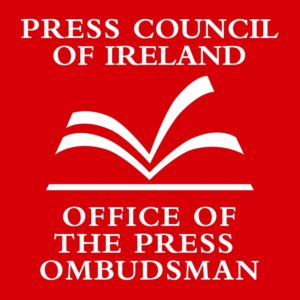
SIX weeks ago Limerick Chamber of Commerce published its historic tome that was 200 years in the making, ‘Limerick’s Merchants, Traders & Shakers – celebrating two centuries of enterprise’.
And while its contents date from Chamber’s early 19th century origin, work began on its 224 illustrated pages in early 2014 when the organisation, appreciating that its bicentennial anniversary was nigh, approached two recognised historians and writers locally to undertake the commission.
Limerick Post took a closer look at this weighty, wonderful masterpiece in the light of this week’s dedicated Limerick Chamber of Commerce supplement, out Thursday 19.
Dr Matthew Potter works with Limerick Museum and Archives and undertook the research and interview project as an external one; Sharon Slater MA is a freelance historian and creator of Limericklife.com network.
Their plunder of the past was aided by Chamber records that are stored in the Museum beside King John’s Castle, and by records kept at Chamber’s HQ at 96 O’Connell Street.

“An editorial committee was set up, chaired by David O’Mahony of O’Mahony Booksellers and with the Chamber’s Edwina Gore, past president Tadhg Kearney, Cian O’Carroll and Brendan Woods, the Limerick branch’s first chief executive officer,” Matthew makes clear. ‘Liam Irwin, the former head of Mary Immaculate College’s History department, came in as our advisor.”
He underlines the collaborative element of this happy project, with praise for colleague Sharon Slater. “We worked together very, very well and closely and successfully, as with the committee and staff of the Chamber”.
The result, ‘Limerick Merchants, Traders & Shakers’, was described by Ireland President Michael D Higgins in his foreword as “of interest for many reasons: as a window through which two centuries of Limerick’s story can be viewed from the perspective of the business community; as an examination of the activities of a major Irish chamber of commerce over that period; and as a documentary of the commercial life of one of Ireland’s principal cities.”
Selling in O’Mahony’s Booksellers for €40, the reference book charts the establishment of Limerick Chamber from its first unlicensed years in 1807 to finally getting its legally protective charter in 1815, and of course, the years since.

The photographs, images and interviews with Limerick people today such as Bridie Breen give it a strong dynamic. Mrs Breen’s family were live-in caretakers to the building at 96 O’Connell Street for the 1920s, ’30, ’40s, just as generations of others were previously.
“Ours became the most active Chamber of Commerce in the world,” Matthew Potter observes. “It regulated the harbour before the establishment of the Harbour Commission in 1823, it regulated the butter trade, it regulated the skin and hide trade and it promoted industry.
“Then, as now, its main function was to represent the business community of Limerick but it only ceased to be so active as local government came into being such as the Harbour Commission, and the Corporation in 1840”.
Today, the Chamber’s suite of partnerships with local bodies, regional works and nationally in strategic vision and profile, has propelled it to being a pre-eminent force in Limerick life and beyond.





